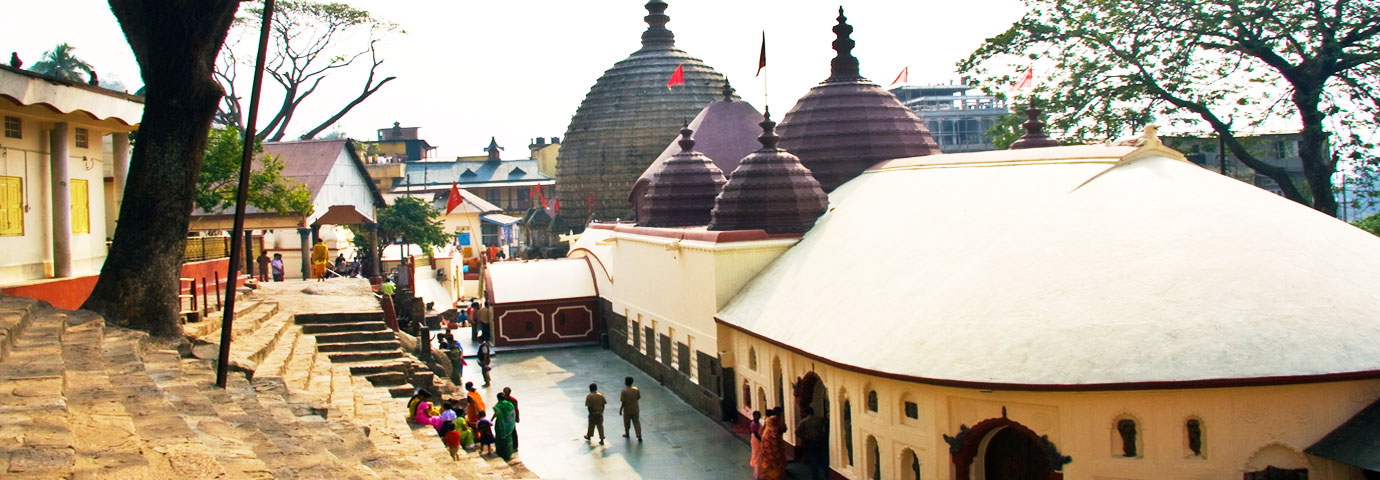History
Kamakhya came into existence after the female genitalia of Sati, the Great Mother Goddess, fell when Vishnu started dismembering her body to force her inconsolable husband, Shiva, into performing his divine duties again.
Legend has it that King Daksha had organized a sacrificial rite, to which he invited all the deities except Shiva. In fact, Daksha had done it deliberately to insult Shiva. Sati, being the daughter of Daksha, came uninvited. During the ceremony, Daksha began to speak ill of Shiva. Unable to bear the insults heaped on her husband, Sati immolated herself. The meditation of Shiva, who is omnipresent, was disturbed. Furious, he descended on Daksha and his kinsmen and destroyed them. With the dead body of his beloved Sati on his shoulders, he started the dance of destruction (Tandava). In his attempt to calm down Shiva and save the world from ruin, Vishnu sent forth his chakra to cut Sati's dead body. The reproductive organ of Sati, the yoni, fell at the spot where the temple of Kamakhya stands today.
When the yoni of Sati fell on the hill, where the temple stands, the hill turned blue and came to be known as Nilachal (blue mountain). The name of the place Kamrup Kamakhya was given by Narakasur, the demon king. He made Kamakhya his patron deity. The original temple was built by Kamdev, the God of Love, with the help of the celestial architect Vishwakarma.
Tradition has it that once in every year, the spring waters at Kamakhya turn red and the temple remains closed. Kamakhya, the Mother Goddess, is supposed to enter her period of menstruation. Cloth offerings brought from near and afar by devotees are soaked in the waters and distributed as prasad (offering).


